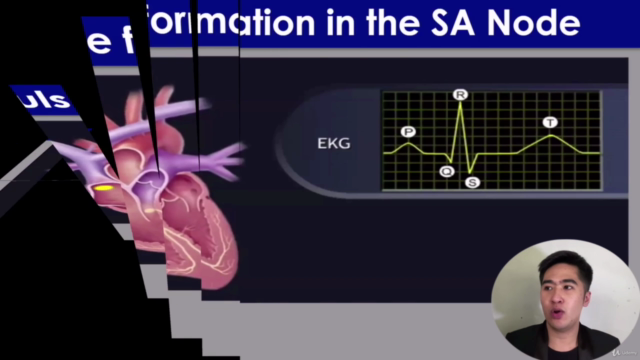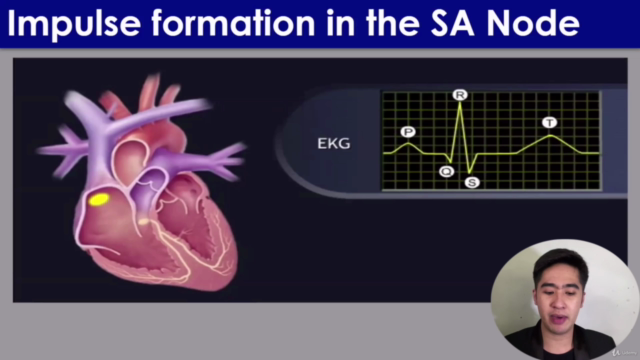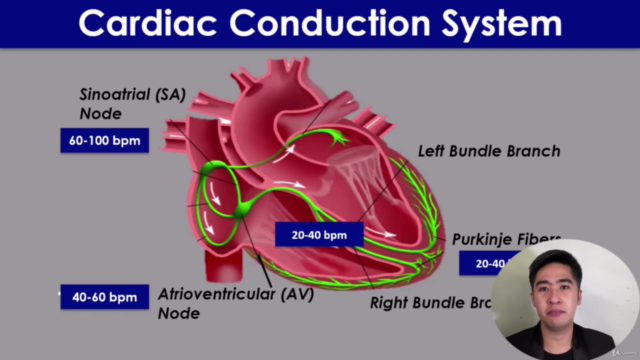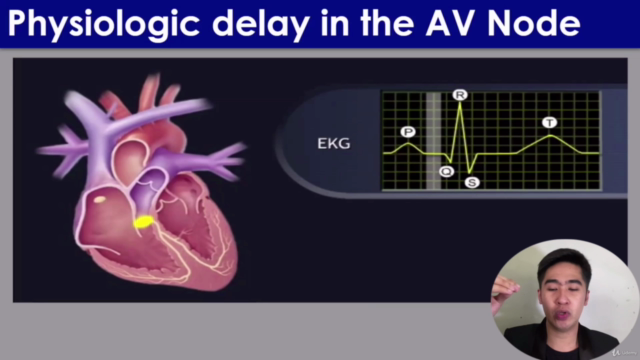Basic ECG Analysis: Identification Made Simple and Easy

Why take this course?
Course Title: Basic ECG Analysis: Identification Made Simple and Easy
Headline: Master the Art of ECG Interpretation – Your Key to Essential Patient Care!
Course Description:
Even though there continue to be new technologies developed for the diagnostic evaluation of patients with cardiovascular disease, the electrocardiogram (ECG) retains its central role. The ECG is the most important test for the interpretation of the cardiac rhythm, conduction system abnormalities, and the detection of myocardial ischemia. It is also invaluable in the evaluation of other cardiac conditions such as valvular heart disease, cardiomyopathy, pericarditis, and hypertensive disease. Furthermore, the ECG serves as a vital tool for monitoring drug treatment, especially antiarrhythmic therapy, and for detecting metabolic disturbances.
Why Study Basic ECG Analysis? 🫀
- Critical Skill in Healthcare: ECG interpretation is a fundamental skill for healthcare professionals involved in patient care.
- First Sign of Cardiac Issues: The ECG can be the first indicator of cardiac abnormalities, providing early detection and intervention opportunities.
- Systematic Approach Essential: A systematic method of interpreting an ECG ensures you do not miss any critical signs or abnormalities.
Course Overview:
- Understanding ECG Basics: Learn the fundamental parts of an ECG tracing to build a strong foundation for more advanced concepts. 📊
- Recognizing Key Waves and Complexes: Get familiar with the different waves, complexes, and intervals that are essential for ECG interpretation. 🕒
- Identifying Abnormalities: Discover how to systematically analyze the ECG to identify potential issues, including myocardial ischemia and arrhythmias.
- Clinical Relevance: Explore the significance of ECG findings in various clinical scenarios and how they guide treatment decisions. 🏥
Course Structure:
- Introduction to ECG Components: Familiarize yourself with the anatomy of an ECG, including lead placements and the importance of each component.
- ECG Wave Identification: Learn to distinguish between the P, QRS, and T waves, and understand their significance in cardiac health. ✅
- Measuring Intervals and Axes: Get hands-on practice measuring critical intervals like PR, QRS, and QT intervals, as well as understanding the importance of cardiac axes.
- Recognizing Normal and Abnormal Rhythms: Differentiate between normal sinus rhythm and other common arrhythmias. 💔
- Case Studies and Practical Applications: Apply your knowledge to real-life case studies, enhancing your problem-solving skills in ECG interpretation.
- Review Quizzes and Interactive Exercises: Test your understanding with regular quizzes and interactive exercises designed to reinforce learning outcomes.
Learning Outcomes:
By the end of this course, you will be able to:
- Confidently interpret basic ECGs: Recognize normal and abnormal patterns on an ECG strip. 🎓
- Apply a systematic approach: Analyze ECG strips in a logical and efficient manner to ensure no details are overlooked.
- Communicate findings effectively: Relay your interpretations clearly and concisely to medical teams and patients alike. 🗣️
- Contribute to patient care: Utilize your ECG analysis skills to aid in the diagnosis, monitoring, and treatment of cardiac conditions.
Join us on this journey to master ECG interpretation, a skill that will not only enhance your professional capabilities but also empower you to contribute significantly to the care of patients with cardiovascular concerns. ❤️
Enroll now and take the first step towards becoming an ECG analysis expert! Let's embark on this learning adventure together with instructor Jomar Rodriguez. Your journey to understanding and interpreting ECGs begins here. 🚀💥
Course Gallery




Loading charts...